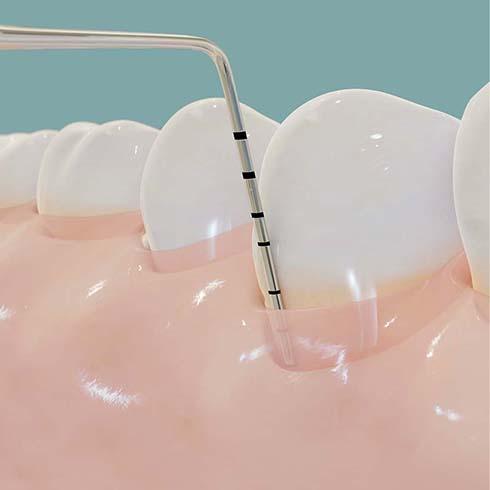The Importance of Healthy Gums
Your gums protect your teeth and jawbones from infection and injury. Periodontics is the branch of dentistry specializing in treating gum infections and disease and keeping your gums healthy.
Tooth Extraction
Extractions are needed when a tooth can no longer be saved by root canal treatment or other treatments. The tooth is removed to prevent damage to the gums and other teeth. After the tooth has been removed we can restore it with a dental implant or bridge.
Frenectomy (Tongue Tie Treatment)
Babies are sometimes born with a condition known as tongue or lip-tie that occurs when the connective tissue between the tongue or lip and the inside of the mouth is too tight. If this condition isn’t treated, it can cause difficulty eating and speaking. We treat tongue and lip-tie by surgically loosening the tissue and relieving the tension.
Scaling and Root Planing
Deep cleaning techniques such as scaling and root planing are used to remove plaque and tartar from the roots of your teeth to prevent infection. Root planing is also used to smooth the roots of the teeth to prevent the gums from becoming irritated and vulnerable to infection.
Video: ScalingLANAP | LAPIP Treatment for Periodontal Disease
LANAP|LAPIP laser therapy treats gum infections and disease to prevent tooth loss and dental implant failure.
Ridge/Socket Preservation
The socket left after a tooth is extracted can collapse, potentially causing other teeth to become misaligned or deterioration of the bone near the socket. We fill the socket with dental material to prevent it from collapsing after extraction.
Ridge Augmentation
The alveolar ridge is the structure formed by your gums and jawbones. Sometimes when a patient has lost multiple teeth, the alveolar ridge can deteriorate, which can change the shape of your face and result in further bone loss. In cases where this deterioration has happened, we can rebuild the ridge with bone and gum tissue grafts.
Sinus Augmentation
When placing dental implants in the upper jaw, there is sometimes not enough bone to properly support the implant. We can augment and strengthen the bone by using bone grafts.
Bone Grafts
Injury or gum infections can cause deterioration of the jawbones. We use bone grafts to repair this damage and strengthen the jawbone. After the grafts are placed, the grafted bone integrates into and augments your natural bone.
Gum Grafting
We can repair damaged gum tissue with a gingival graft (gum graft.) Gum grafts are also used for the cosmetic treatment of the gums. The grafted tissue is moved from another area of your mouth to the gums being treated.
Pocket Depth Reduction
Your gums can pull back from the roots of the teeth to form small pockets. These pockets can gradually fill with food particles, which can lead to the growth of bacteria and cause a gum infection. Pocket depth reduction is a procedure to reduce or eliminate these pockets to prevent them from becoming infected.
Flap Procedures
A flap procedure is a surgical procedure where a small “flap” is made in the gums so we can access the tissues underneath. The flap is closed with sutures after treatment.
Crown Lengthening
We can remove the gum from around the root of a tooth to expose more enamel and make the tooth “longer.” This procedure is used for the cosmetic treatment of a “gummy smile” or to prepare a tooth for a dental crown or other restoration.
Frequently Asked Questions
What’s the link between gum disease and heart disease?
Research shows a link between gum disease and an increased risk of heart disease in patients. It’s believed that untreated gum disease causes the level of inflammation in the body to increase. High levels of inflammation can lead to the development of inflammatory conditions like heart disease.
Is gum disease linked to diabetes?
Studies indicate there may be a two-way link between diabetes and gum disease. Diabetes can raise the risk of developing infections such as gum disease, and there is evidence that good periodontal hygiene may positively affect blood sugar levels.
What are plaque and tartar?
Plaque is a biofilm constantly forming on your teeth' surface. Bacteria can grow in the plaque. These bacteria secrete acids that can damage your teeth' enamel, leading to tooth decay and the formation of cavities. The acids can also irritate your gums and make them vulnerable to further infection.
Tartar is hardened plaque that usually forms at the base of your teeth and can’t be removed by brushing or flossing. It can cause gum irritation, and it can also host decay-causing bacteria. Tartar is removed by a dental hygienist or dentist using a special tool called a scaler.

